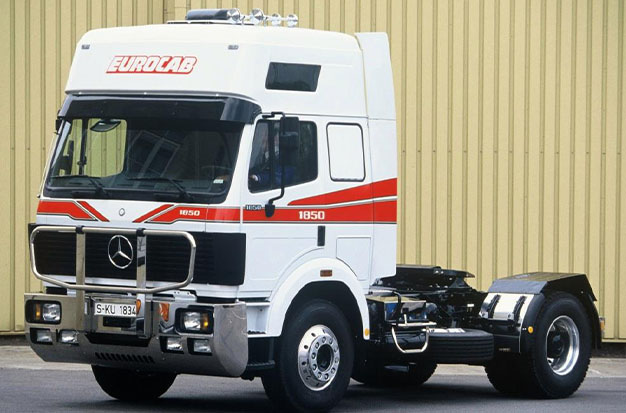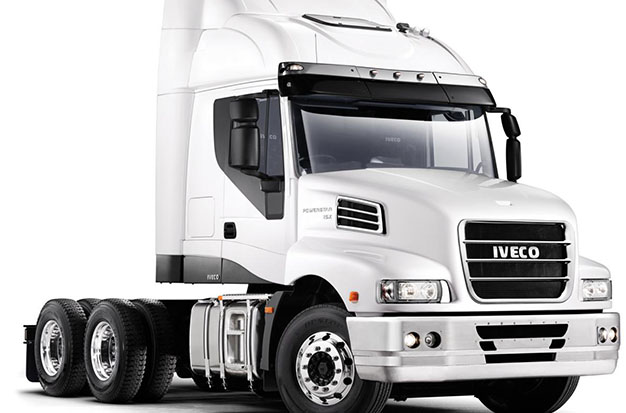Ships, vehicles, trains, planes, and trucks are just a few of the many different types of transportation used in the shipping and logistics sector. There are a variety of classifications for the latter to meet a variety of needs. The standard truck, which has a sizable trailer attached to its back and rolls on six to eight wheels, is likely the one you are most familiar with.
In the logistics sector, there is a special classification of trucks that is well known. The term “bobtail truck,” “bobtail tractor,” or “bobtail trailer” are all used to describe it. You might be wondering what that is right now and what it looks like specifically. In this article, we discuss the bobtail truck, including its definition, intended use, size, and other details.
What Is A Bobtail Truck?
A trailer is not connected to a bobtail truck. Driving a semi-truck or truck used for hauling cargo while bobtailing is known as this. Bobtailing frequently occurs when a hired truck driver is initially dispatched to their pick-up location. The term “bobtailing” should not be confused with the term “deadheading,” which occurs when a truck towing an empty trailer is being driven.e., containing no cargo.
What Makes It A “bobtail Truck”?
The ability of the semi-tractor to detach the trailer is the reason why a bobtail tractor is called a “bobtail.” The term “bobtail” refers to the practice of clipping the tails of cats and dogs. Both cats and dogs are referred to as having bobtails when their tails have been cut short.
By removing the trailer, a tractor-trailer can be made shorter and is then known as a bobtail vehicle or semi-truck.
Types Of Bobtail Trucks
Bobtail trucks come in three basic varieties.
Running Bobtail Or Semi-truck
A “running Bobtail” truck is a smaller semi-truck without a trailer, as the name might imply. A tractor unit and a trailer make up a semi-truck’s two main parts. The trailer is fastened to the tractor unit using a fifth-wheel style hitch.
Straight Propane Truck
By adding a specially made tank to the truck’s rear bed, small trucks can easily be converted to propane vehicles. The storage capacity of these rounded tanks is around 5000 gallons, and they can maintain sufficient pressure and temperature throughout the journey. These trucks play a big part in supplying gasoline or propane to gas stations and auto dealers.
Small Bobtail Truck
These vehicles, which are typically small to medium-sized trucks, share a single chassis with all of their axles. Small Bobtail trucks are what they are known as when they are not towing a trailer.” Applications for these trucks are typically limited to lighter or medium-weighted loads, such as hauling dumps, transporting eggs, transporting bakery goods, etc.
A Bobtail Truck’s Size
Because it lacks the benefit of a connected trailer’s length, a bobtail truck is significantly smaller than a standard truck. Bobtail tractors are typically only 24 feet long, 13 feet and 4 inches tall, and 96 inches wide.
The weight of a bobtail truck can be substantial despite its small size. With two drivers, full fuel, and DEF tanks, their weight can reach 20,000 pounds. With 10,000 pounds on the steer axle and up to 9,000 pounds on the drive axles, this weight is distributed over the truck’s front, middle, and back.
However, this weight does not apply to all bobtail trucks in existence. Depending on their size and specific features, some trucks may weigh less or more.

What Is A Bobtail Used For?
Bobtail trucks are not typically used to move cargo or goods. Instead, it is the name given to a vehicle between trips, such as when a truck drops off a trailer and travels to pick up a new one. It is a bobtail tractor that will be used during the interval between dropping off the old trailer and picking up the replacement. See more about What Is A Straight Truck?
Why Does Bobtailing Occur?
Typically, bobtailing happens for one of two reasons:
- To pick up a loaded trailer, a driver moves a truck from its terminal to the dispatch center for the sector.
- After unloading the trailer carrying the cargo, the truck driver returns to the terminal.
Bobtail Trucks Are Hazardous, Why?
A bobtail truck is actually riskier for other drivers on the road even though it doesn’t have the large trailer behind it. For those who believe that gaining weight increases risk, this seems counterintuitive.
Bobtail trucks are riskier because they are more challenging to control and stop. Driving a bobtail truck requires greater caution from truck drivers in order to prevent collisions.
Trucks are made to tow heavy trailers, which is what they typically do. Thus, the rear axle, which is located beneath the trailer, houses a large portion of their braking power. When a truck is configured as a bobtail, there is very little weight over the rear axle, which lowers braking power.
Instead, a bobtail truck’s front wheels—whose primary function is steering rather than braking—carry the bulk of the vehicle’s weight. Bobtail trucks are more likely to skid out in sharp turns or tight curves as a result of this.
Bobtail trucks frequently have a greater stopping distance despite weighing less because of the same factor.
Driving a bobtail truck is particularly risky when the roads are winding and it is raining. See more about What Is A Straight Truck?
Bobtail Truck Accidents
While bobtailing is not legal, truck drivers are still subject to strict safety regulations. After all, every truck eventually has to travel without any cargo.
Additionally, despite being specially trained for the job, truck drivers frequently lack experience with bobtail trucks, which actually require more skill and expertise to drive safely.
As a result, there is a greater chance of collision and injury to other motorists. See more about What Is a Reefer Truck?
Deadheading Vs. Bobtailing
Although bobtailing and deadheading are frequently used interchangeably, they are two very distinct ideas that shouldn’t be mixed up. A truck that is bobtailing is one that has just dropped off an old trailer and is en route to pick up a new one.
On the other hand, a truck pulling an empty trailer to a location is known as a deadheading. When all deliveries have been made and the trailer has no more cargo, this typically occurs. The truck will deadhead to its parking space or location.
Conclusion
Bobtailing is practically unavoidable in the fast-paced world of trucking. In almost every single movement of goods between producers and consumers nationwide, a truck without a trailer is involved. The majority of truck drivers will eventually have to Bobtail for a period of time because they are frequently on their way to pick up a loaded trailer or move after it has been unloaded.
